So, finally, after several advance mentions it’s time to have a look at the new V&A book about posters, British Posters: Advertising, Art and Activism.
I don’t think that the fact that this has been sitting around on my desk for a week or two is just an accident of circumstances. It took me a while to start reading it, even though I knew I ought to. Every time I picked it up and flicked through it, I wasn’t inspired to carry on. When I’d made myself read it, I then didn’t really know what I wanted to say about it. I’m still not sure whether I like it or not.
To some degree this is as much my fault as the book’s. The title sets out its range quite clearly – art and activist posters as well as the commercial design that I tend to prefer – which means that large swathes of the book are not really my cup of tea. Although I do also think that it could have tried to persuade me a bit harder that these things are worth my time. At the same time the things I am most interested in – commercial posters pre and post war – don’t get enough of a treatment for my tastes.
But let’s accentuate the positive. The book does have some thought-provoking ideas in it. I’ve already mentioned the fact that it sets out a very useful history of outside display. While reference to the Town and Country Planning Act of 1947 may sound dry, it actually matters. The decline of the poster during the 1950s can be seen not just as result of the rise of television, but also of the restriction of poster sites. Throughout the 1950s and 60s, local authorities used the act to ‘clear poster sites from rural and residential areas’. There were arguments for the poster as an integral part of the urban scene, but mostly the planners won. Poster sites were no longer huge billboards, but instead decorous display columns in shopping centres. No wonder the power of the poster was on the wane.
Another one seems blindingly obvious, which is that the meaning of the poster changed significantly between 1950, say, and 1970. No longer did it mean a piece of advertising, instead a poster was something that you bought from Athena to decorate your room (students, this means you). While this is something that we all understand at some level, it’s important to articulate it, as it has all sorts of interesting implications for how we think about posters. So interesting in fact that I’m going to give them a blog post all of their own one of these days.
Another thought worth holding on to is the way that posters have, for a whole host of reasons, been singled out from the greater mass of graphic design. Flood ascribes this to the vogue for posters in the late 19th century, which set the habit of collecting, cataloguing and admiring them. I’d also argue that now it is also because they are most like art, in that they are flat pictures which can be framed and hung on the wall. But at the same time they are also very unlike art – I’m thinking here of railway posters in particular which continued the British tradition of landscape art when the vast majority of fine artists had abandoned it entirely. Work that one out then.
The development of the poster market is also something I’ve never seen considered before either. I was particularly interested in the account of a man named Bob Borzello, who ran a poster import export business from Islington during the 1960s psychedelic boom.
He selected British posters for the American market: posters for theatre companies, London Transport and the General Post Office proved popular, and he claimed he could charge more for anything with London on it.
Where have all these GPO posters gone then? I need to know.
In between these flashes of interest, though, there is a lot which isn’t quite so enthralling. In part this is because this book is trying to cover an awful lot of ground in not that many words, so ends up being very general by default.
There is also the fact that I cannot bring myself to care about 1970s agit-prop posters in the way I care about Tom Eckersley or Barbara Jones. I would guess that the slightly scattergun choice of subjects is a function of the V&As collecting policy. I can see the political reasons why, if you’re a curator at the V&A, there would be a political reason for taking the collections as both a reasonable depiction of a subject and a fait accompli, but for the rest of us on the outside, it makes for a bit of a disjointed read.
Back in the days when I was doing my time in the V&A, their entire depiction of the ceramics of the 1950s consisted of the studio pottery of Bernard Leach, Hans Coper and Lucie Rie. It was all lovely stuff, but I wouldn’t have liked to write a history of 1950s tableware on that basis. They also had failed to collect any mugs at all. It’s all very different now, but museum collections do still have their biases and absences, and it’s perhaps better to address these rather than take a collection as gospel.
The other problem, though, is that curse of academia generally, the use of a language so abstract that it ends up utterly disconnected from its subject and floating away into the ether. Here is one sentence, on my current favourite topic of World War Two posters, as an example.
By balancing themes of collective sacrifice and citizenship with increased state responsibility for informing and protecting the people, war posters had set out a form of social contract between the government and the British people.
The only concrete noun in all of that is the word poster, although I might also allow contract at a push. But this does at least tell us something. Where I find the abstraction particularly galling is when the abstraction is given precedence over the posters. Take this, a fine piece of London Transport pair poster from 1950.
The poster is introduced by the idea that – oh it’s so abstract I can’t even paraphrase it – here you go in her own words.
[posters] encouraging people to travel out of London had helped to foster an idea of the British countryside as a site of collective heritage and recreation. This romantic but democratic idea of the land gained institutional currency after the war with the creation of National Parks, Green Belt policy and the expansion of the National Trust, but was offset by the urgent need to increase agricultural production and drive forward the mechanisation of farming.
Land. I know what that looks like at least. But the language itself is not so much the problem – there is a point here and I can discern it floating high up there in the abstractosphere – as the conclusions it leads to.
Tractors and stockbreeding, two king-pins in the modernisation of farming, have a prominent place in the composition.
Now I could say a lot of things about this poster – probably starting with the implicit contrast of rural life when depicted in the very urban and mechanised environment of the underground, moving on to the neo-Romantic rather than modernist style, possibly influence of Stanley Spencer in the apple-picker and generally that it is rather good. If we were looking at the text too, perhaps it would also be worth noting that the poster feels the need to instruct the Londoner on why the countryside is good and how to behave in it, showing an estrangement between urban dwellers and the countryside. But the mechanisation of farming is hard to see in it, especially given that the steam powered thresher – given far greater prominence than the tractor – was even in 1950 a relic of the last century.
What’s happening here is one of my bugbears, an argument into which posters have been dragooned as supporting evidence. I’d far rather start with the poster and see what it might have to tell us.
So should you buy this book? I still don’t really know the answer to that question if I’m honest. If you’re more interested in art and protest posters than I am, then yes probably. If you’re me, or something akin to that? Well then yes, I do still think you should. Not only will you end up knowing more about the history of poster display, you may even end up having a creative argument with it to boot.
(Most of the images illustrating this post, incidentally, come from the V&A’s online archives. Now this is not only a selection by curatorial choice, but also further limited by the fact that only some of the entries have images with them. Even so, I find it strange that I couldn’t find a single English railway poster in there – the Welwyn one above was as close as I could get. It’s a very partial story indeed.)
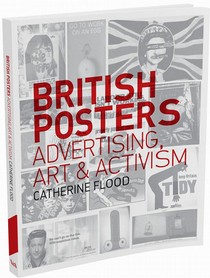
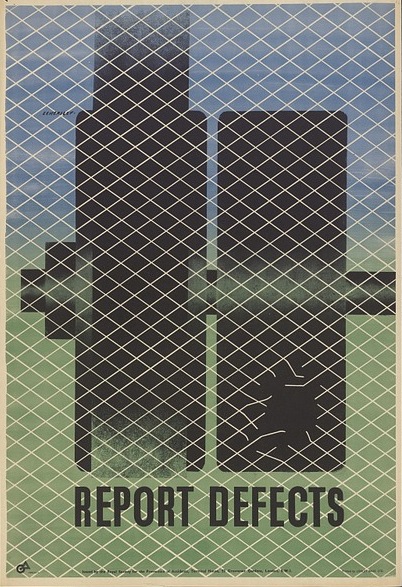
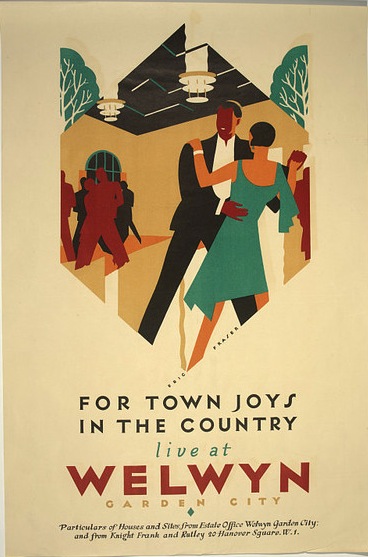
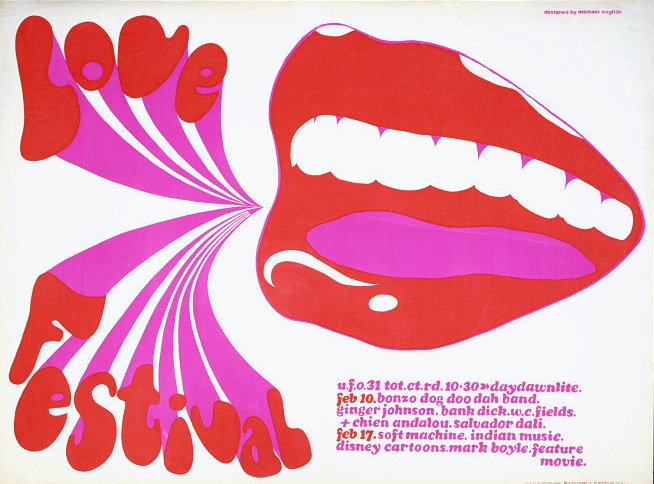
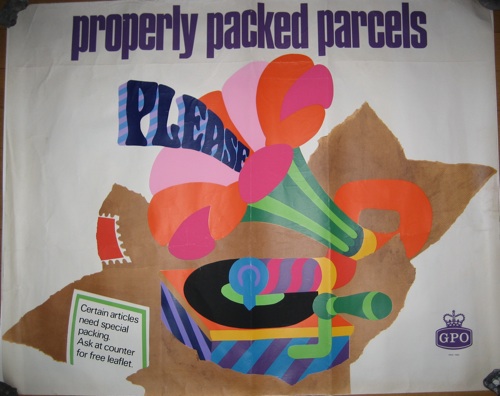
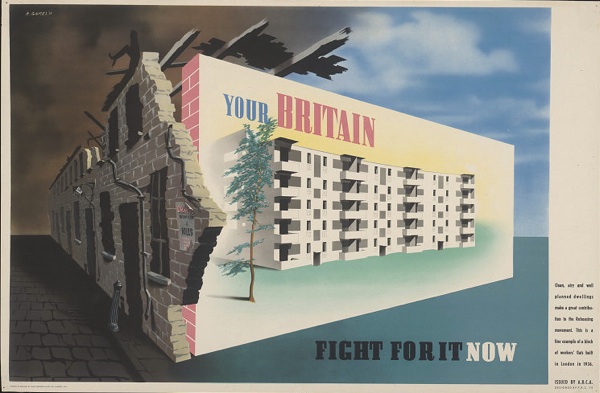
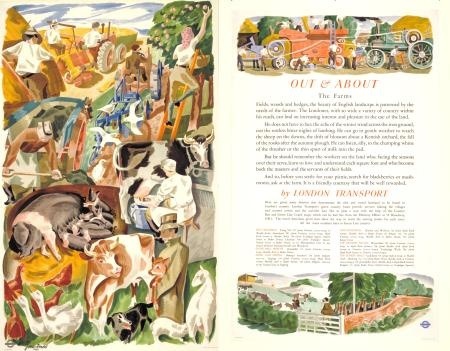
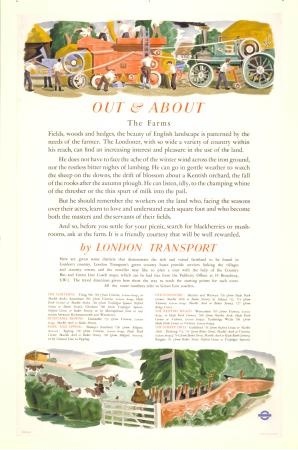
How can such a volume, purporting to be a definitive work, fail to include any of the works produced by railway companies, or comment on the influence that they had in changing attitude of all classes towards travel, holidays and culture.
I think i’ll save my £19.99 and find a suitable poster to buy on ebay. Or at least make a contribution towards it.
Thank you. By using the phrase ‘definitive work’ you’ve allowed me to crystallise exactly what the problem is with this book. It’s clearly – as seen by railway posters alone – not a definitive work. Which is fine, because not everything has to be; but then it isn’t opinionated or exciting enough to make up for that. What is in there is a tour of the subset of posters that the V&A happen to own, but without ever addressing the fact that this is a rather partial subset of all posters. And hence unsatisfactory.
I think you make a good observation about academispeak which is becoming all pervasive. The problem is that the university sector is beginning to monopolise so much activity that previously took place outside (I was going to say in the real world but that sounds too Daily Mail). So everyone from artists to cultural commentators now find themselves doing PhDs and everything becomes ‘research’ (preferably of international standing so the college gets a few quid when the REF come in). In some ways this is good as it provides a home and an income for those who might otherwise not have one the downside is everyone begins to write in a similar quasi academic style.
I agree with all that you say, but I think what happens then is that academi-speak almost becomes a dialect. People read books in it and so think that is what you have to write – and indeed it probably is what you have to write if you want to get those research points – and the cycle goes on almost endlessly. I’d rather writing were a form of communication, and as such prefer Anglo-Saxon, concrete words and a story.
Ah, academic-speak. Such a joy. This article http://tinyurl.com/cuodaja contains the following gem: ‘A lecturer in my department once had an article turned down by a prestigious journal because, though they liked the piece, they felt that it was “written too clearly”.’
Sadly even the Sokal Affair spoof – which was actually published in Social Text http://www.physics.nyu.edu/sokal/transgress_v2/transgress_v2_singlefile.html – failed to stop them in their tracks.
Catherine Flood’s new book on British posters makes no claim to be definitive.
The book is based on the V&A’s own collection. Whilst the collection is big; it is by no means complete. So, there are bound to be gaps. Furthermore and in relation to the example of railway posters – those posters are the institutional responsibility of the National Railway Museum, York. So, their absence in this case is entirely understandable.
As I pointed out in my own book, the institutionally fragmented archive of British posters has made the overview of British poster history more complicated than it need be.
Catherine’s book negotiates this complex terrain well. Whilst not definitive, the book deals authoritatively with the British poster against a background of significant cultural changes in politics, economy, education, social relations and so forth. There’s also plenty of space left for further comment. That’s all is to be commended.
I do not think that Catherine deserves to be singled out for her “academic” style of writing – it all seems to be pretty clear to me.
One of the most significant things that happened in the 1960s was the expansion of the British University system beyond the ancient and redbrick institutions. The new universities expanded the range of their activities into the social sciences. The scope of the new disciplines was implicitly critical of the prevailing order of things.
At the same time, the student population became bigger, younger, more socially diverse, and (for the first time) was distinguished by a more-or-less equal balance between men and women.
This combination of ideas and idealism fuelled a counter-cultural explosion beyond the academy. One powerful and distinctive expression of this was the poster… and people like Bob Borzello played an important role in that phenomenon.
Combining the “big picture” background with the human detailing of life and stories is never easy.
Interesting – I should say first that I don’t yet have a copy of the book so I probably shouldn’t comment on it directly however my previous remark about academic speak was based on the extract offered above and I stand by my observation of the creeping nature of this kind of writing. It is not that there is anything wrong with trying to locate the British poster in a cultural context but often there is a sense that there is too much effort being made to do this at the expense of the poster itself and what it has to offer. True no art exists in a vacuum and especially not the poster but I would rather read something like Robert Hewison’s Culture and Consensus if I want erudite writing on post war Britain. Mores satisfying is a focus that starts with the poster and its graphic and design motifs and then work outwards to demonstrate how through them one can glimpse changing trends both artistic and cultural. One may well end up with the same content it is just a different angle of approach.
I agree that the book doesn’t have to be definitive, but I think it would have helped to include a bit which considered the limitations of the V&A’s collection and how that might affect the argument. The holdings are inevitably partial, not just in the fact that all the railway posters live in York, but also in the tastes and choices of individual curators. Acknowledging this and analysing it isn’t just useful, it’s also another insight into how the idea of the poster has developed and changed.
As for abstraction and academic writing, we’ll probably just have to agree to differ on this one. I spent much longer in the media than in museums, and so my bias is inevitably towards popularising things and explaining them to the maximum of people. But there is always room for both.
However, I do think that the V&A is a bit of a special case here. I know that circumstances have tilted it a bit more to academia in recent years, but in the end this is a public collection, held in trust for the nation. As such I do think that the museum has a duty to popularise and explain, and do this rather more than just talking to other academics. (I have a whole pent-up rant here about how bad museums are at telling stories, but that’s another thing for another day).
But I also don’t like abstract language because I think it’s undemocratic and one of the tools by which we are badly ruled and served. Clearly that’s not the case in academia, where it’s not going to do any more harm than creating clouds of waffle and annoying me. But in the hands of politicians and business, it’s a way of disguising responsibility and, in the end, preventing the public from thinking clearly about what these people are doing. Take the difference between ‘collateral damage’ and ‘soldier injured by the weapons of his own side’. One is something we might care about, one isn’t. That difference is important, hence my preference for the short simple concrete word wherever it can be used.
Where did the Post Office posters go?
They’re on my wall.
Excellent. Which ones?